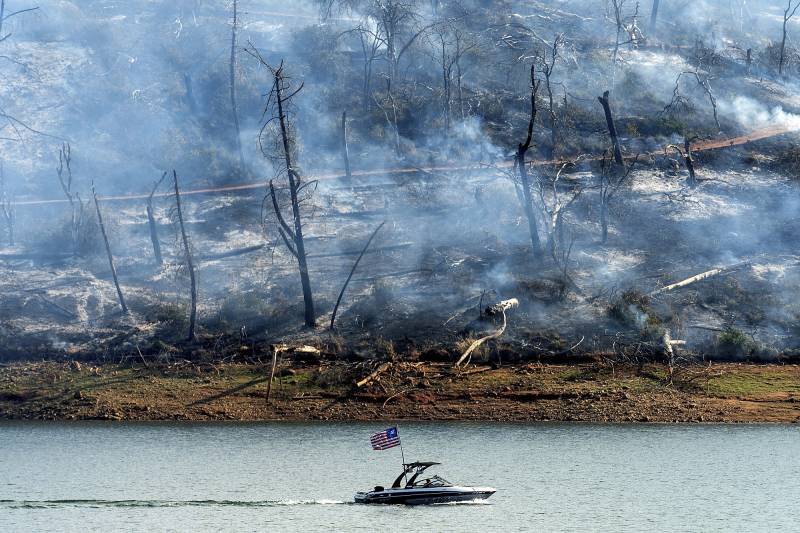Nearly 1,500 firefighters are battling the blaze, aided by air tankers from throughout the state. Among them are 18 firefighters, seven engines and one supervisor from the San Francisco Fire Department.
Gov. Gavin Newsom declared a state of emergency in Butte County on Wednesday in response to the fire, noting an “imminent threat to life” with homes, critical infrastructure and healthcare facilities at risk. The proclamation allows for increased aid provided and coordinated by the state and temporarily suspends certain codes to streamline the fire response.
“We are using every available tool to tackle this fire and will continue to work closely with our local and federal partners to support impacted communities,” Newsom said in a statement. “As we head into some of the most challenging months of wildfire season, the state is better prepared than ever to protect at-risk communities with new tools, technology and resources.”
Smoke from the Thompson Fire is likely to be visible in the Bay Area throughout Wednesday because of stagnant air and high pressure in the area, which is driving an intense heat wave. That could come in the form of smoke or haze, but it’s not expected to be too bad, said Nicole Sarment, a meteorologist with the National Weather Service.
“But again, conditions are just bad right now anyway with the heat, so this is another good reason for people to just stay inside,” Sarment said.
The blaze comes amid red flag warnings from the dry, windy conditions and the heat wave, which has significantly increased the risk of fire danger and could make firefighting efforts more difficult.
Elevated fire risk is expected throughout the heat wave, which is forecast to last through the middle of next week, as some areas of the state are reaching record dry levels for this time of year, PG&E meteorologist Scott Strenfel said Wednesday.
In some inland areas such as Redding and Fresno, temperatures are expected to exceed 110 degrees for more than eight consecutive days, which Strenfel said “has never happened before.”
The heat wave has put a great deal of pressure on PG&E’s power grid, said Mark Quinlan, the vice president of preparation and execution for the company’s Public Safety Power Shutoff program, which cuts power in some areas during times of high fire risk.
While the grid is currently stable, Quinlan said it is “bouncing right up against the all-time system peak.”
Currently, 6,800 PG&E customers, mostly in Butte County, are without power.
Depending on fire risk and grid load, more customers might face outages in the coming days, especially during the afternoon and evening when the power grid is most stressed, Quinlan said.
“We’re continuing to monitor the high temperatures, we’re continuing to have a laser focus on wildfire activity and wildfire safety, and we’re in close coordination with the agencies at both at the state and local level,” Quinlan said. “We want to urge customers to be prepared for potential heat related outages.”
KQED’s Katie DeBenedetti and Samantha Lim contributed to this report.

